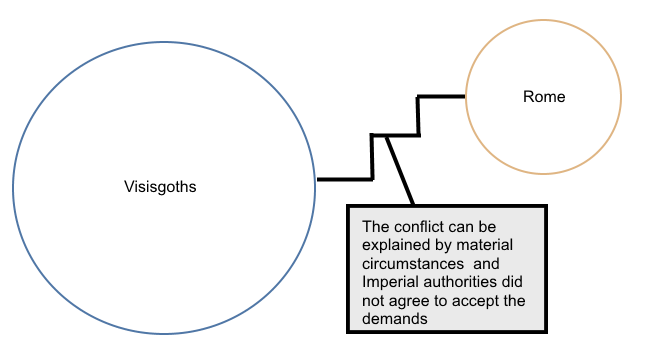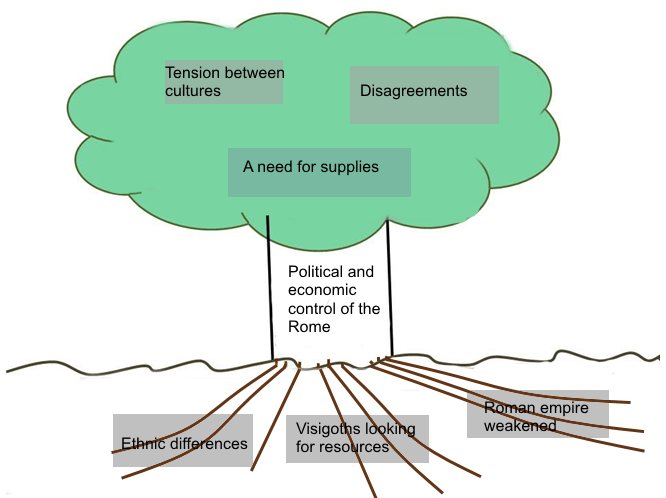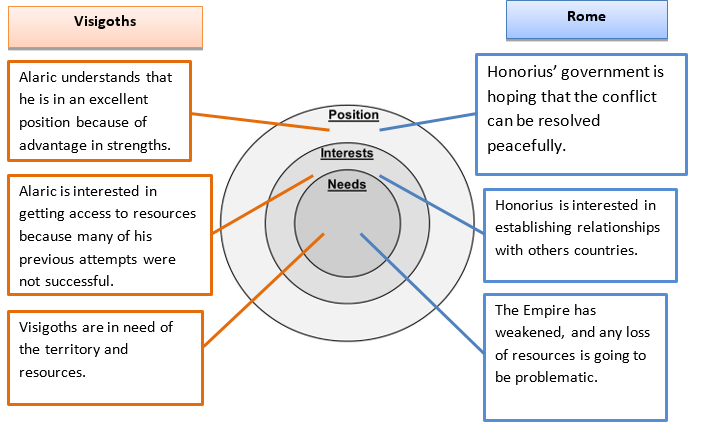It is imperative to note that the Fall of Rome is one of the most significant events in history because it has put an end to a mighty empire. The conflict between Visigoths and Rome was especially problematic (Dunstan 2010). Moreover, it has left the city devastated, and it was nearly impossible to recover at that point (“Bubbles Map”).

Also, it is paramount to understand the core reasons behind this conflict and what could have led to such complications. One of the biggest problems that should not be disregarded is that Visigoths were looking for a territory where they could settle, and Rome was an outstanding option because it was one of the biggest cities at that time. Moreover, another issue that needs to be discussed is that Honorius and Alaric had a serious disagreement (Heather 2005). The biggest problem is that the leader of Visigoths has agreed to help Stilicho, who has promised to pay four thousand gold. However, he was no longer alive, and Alaric was incredibly frustrated by the fact that he may no longer get the money. Also, it is necessary to mention that many believed that his goal was to attack Ravenna, but it was not the case, and he was determined to conquer Rome. Moreover, the problem is that the city was incredibly dependent on imports, and Alaric understood that this approach would lead to starvation (“Conflict Tree”).

The peace that has been suggested was not beneficial, and Alaric has demanded all the gold that present in the city. Another aspect that is worth noting is that he wanted to get access to all the barbarian slaves, and this indicates that he could have other motives besides profit. It was evident that Rome would not be able to win the fight, and they have reached an agreement, but the problem is that it was not possible to collect the necessary resources. Also, Alaric has made a suggestion to collaborate with Rome if aristocratic hostages are freed (Moorhead & Stuttard 2010). The problem is that many other complications have been introduced.
Alaric has camped outside of the city, and he thought that it can be used as an outstanding opportunity to get concessions from the government. Moreover, it is paramount to note that most negotiations were not successful. Honorius understood that Rome was significantly weakened, and numerous complications would occur if he agreed to accept the demands of Visigoths. One of the core factors that have led to the Sack of Rome that happened in 410 was an attack by one of the allies of the Roman leader (Kohn 2006). The problem is that they have planned a meeting, and such a situation was not expected. Moreover, it can be viewed as an efficient strategy, but the problem is that Alaric was able to survive the attack and decided that the conflict may not be resolved peacefully at this point (“Onion Analysis”).

In conclusion, it is evident that it is one of the most significant conflicts and can be viewed as one of the best examples of bargaining and negation. Moreover, it is entirely possible that it could have been avoided and resolved peacefully.
Reference List
Dunstan, WE 2010, Ancient Rome, Rowman & Littlefield Publishers, Lanham, MA. Web.
Heather, P 2005, The Fall of the Roman Empire: A new history of Rome and the barbarians, Oxford University Press, Oxford, UK. Web.
Kohn, GC 2006, Dictionary of Wars, Infobase Publishing, New York, NY. Web.
Moorhead, S & Stuttard, D 2010, AD410: The year that shook Rome, Getty Publications, Los Angeles, CA. Web.